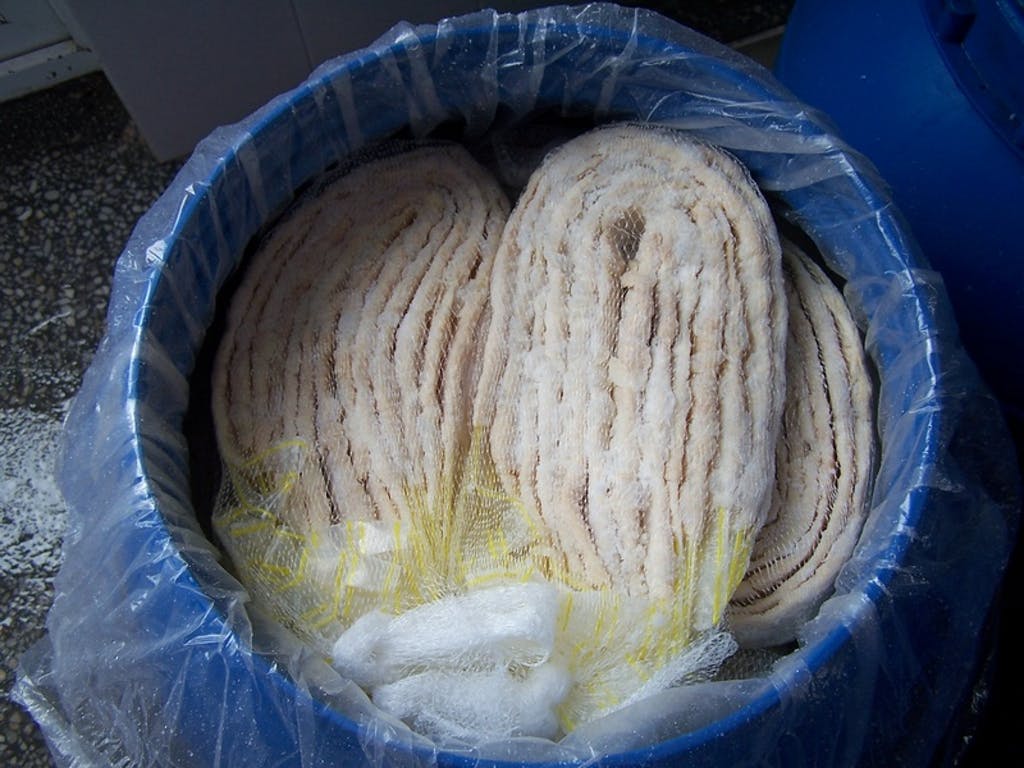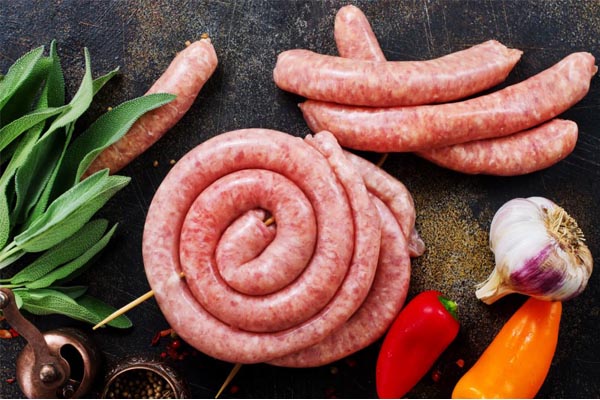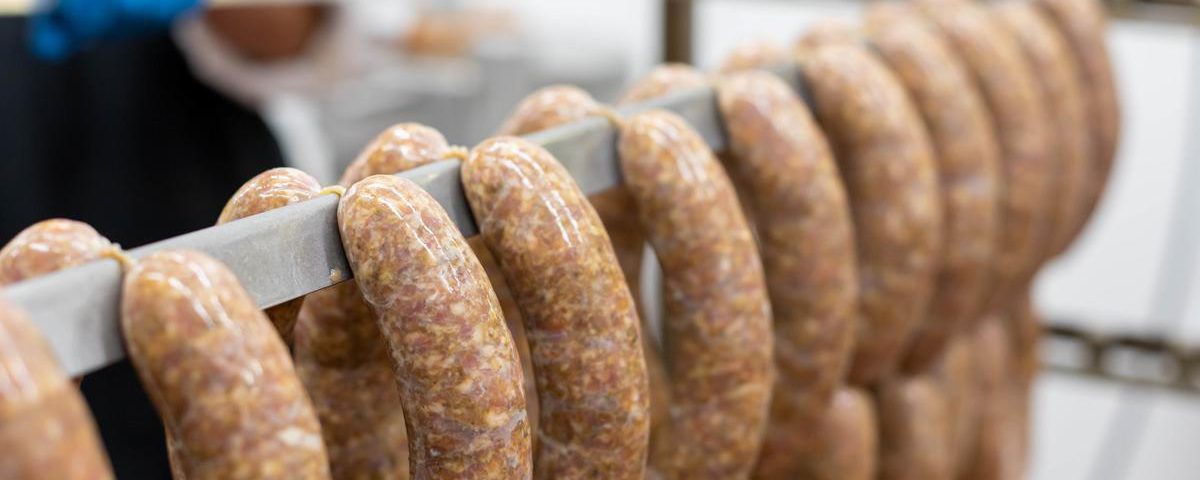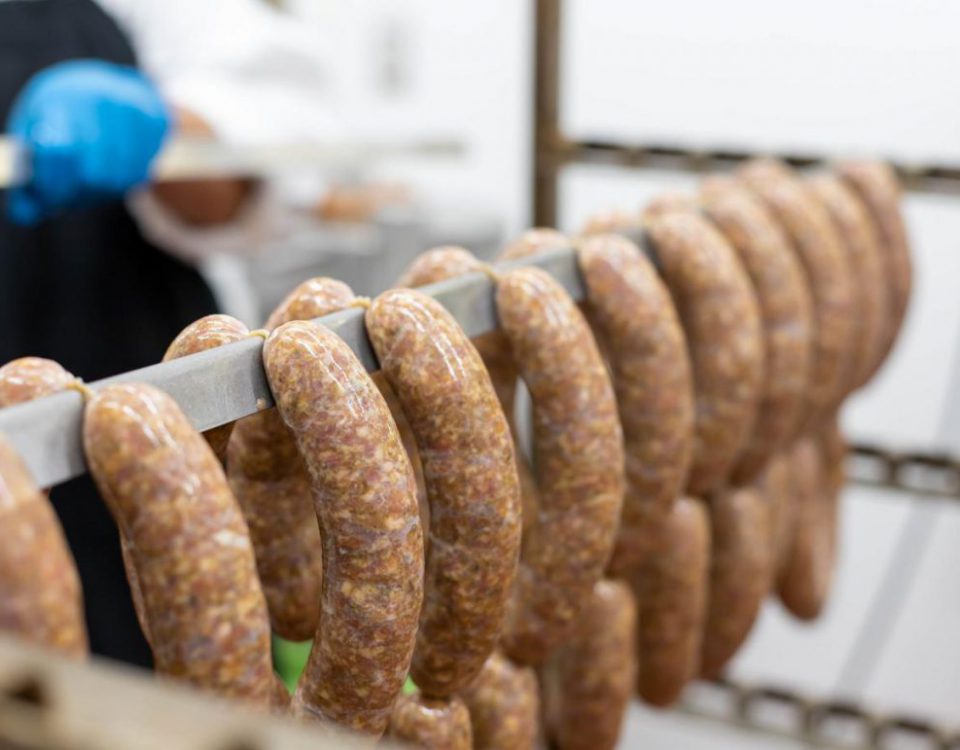
آیا پوشش روده ی طبیعی دام برای سوسیس فوایدی دارد؟
June 28, 2021What are the nutrients of animal intestine?
July 6, 2021This post is also available in: Persian
Casings have been utilized throughout the years in the production of sausage and processed meat products. Casings have been referred to as the oldest form of packaging materials for sausage. Casings determine the final size and shape of the sausage product. Casings serve as processing molds, containers during handling and shipping, and as merchandising units for display. In years past, sausage production was limited to the amount of available animal intestines. With the development of collagen, fibrous and cellulose casings the production of sausage is only limited by the availability of raw materials. Sausage casings have evolved from old world innovation and applied to today’s high paced processed meat production. Casings are made of two basic materials, cellulose or collagen. Five specific casings are generally used in the production of sausage products- animal, regenerated collagen, cellulose, fibrous, and plastic casings.
Sausage links are a mixture of ground meat, fat, seasoning, and sometimes fillers that is packed into a casing and then tied or twisted at intervals to create individual links. Traditionally, link sausage is stuffed into natural casings made from the intestines of animals, but artificial casings are also available on the market. These days most commercial sausages use synthetic casings. Before you make your own sausage links—or just want to know what you’re eating—learn about the differences between natural and artificial casings.

The natural casing’s origin may have begun around 4,000BC where cooked meat was stuffed into the stomach of a goat, but today natural casings are made from the submucosa, a layer (which consists of naturally occurring collagen) of a farm animal’s intestine. The intestines mainly come from pigs, cattle, goats, sheep, and sometimes a horse. This method of encasing sausage has been around for centuries—although machinery has replaced the need to clean the intestines by hand before use—and is the only form of casing that can be used in organic sausage production.
The benefits of the natural casing are flavor and visual appeal. Because the natural casing breathes, it results in a deeper flavor and richness in the sausage—the smoking and cooking flavors can permeate the casing and infuse the meat. Since the casings are all-natural, the sausages are very natural looking, being somewhat irregular in shape and size.
Artificial sausage casings can be made from materials such as collagen, cellulose, and plastic and may not always be edible. Collagen casings have been around the longest and are produced from animal collagen, mostly from the hides of cows and pigs. Sometimes the bones and tendons are included, and the casings can also be made from poultry and fish. An inexpensive choice, collagen casings are easier to use than natural casings as they provide better weight and size control of the sausage.
Cellulose casings are made of viscose, a material comprised of the cellulose from wood pulp or cotton linters (the fibers that cling to the cotton seeds after being separated from the cotton). These casings are strong and sheer, and permeable to smoke; they are peeled off after cooking. Plastic casings are not edible, and since they are impermeable, they are used for non-smoked, high-yield products.
Some artificial casings require soaking in hot tap water before use and need to be punctured with a knifepoint before stuffing to eliminate air pockets. The advantages of using synthetic casings are their strength and uniformity.
Alternative Casings
If you do not have access to natural or artificial casings, or just don’t want to use them but still want to make sausage links, you can make casings from strips of muslin. To form casings about 1 1/2 inches in diameter, cut strips about 6 inches wide and 16 inches long. Fold lengthwise and stitch edges together to form tubes.
If you do not use casings at all, you can still form links by rolling up the mixture in foil or plastic wrap and refrigerating until firm. You will need to add a binder (bread crumbs, soy protein concentrate, etc.) to the sausage mix, normally 5% to 10% of the mix, to keep the meat from separating during cooking.
Considering the Sensitivity to Moisture and the Microbial Environment
Two of the most important areas you are going to need to think about are the moisture that could potentially find its way into the casing, and the bacteria that could be waiting to make its home in your brand-new sausage creation. Nobody wants to serve up freshly grilled bacteria.
One of the reasons why natural casing isn’t really the best for beginners is that it is very sensitive to moisture that can get into it. When collagen in natural casing becomes wet, it becomes soft and weak.
If the natural casing is left out to dry for a little too long, it becomes too hard to comfortably eat. This makes it very important to find the proper balance of moisture if you are planning to use natural casings when you are grilling.
Likewise, because natural casings are quite literally animal intestines, there is going to be bacteria on them whether you keep your cooking area clean or not. As long as you properly salt your natural casings, you should be able to keep the worst of the bacteria at bay.
While salting casings is easy, it is yet another step in the cooking process that some people might not appreciate.
Which Is Better?
While it is completely up to the opinion of the person using the casing, it is a definite fact that natural casings are not beginner-friendly. This also means that unless you are completely serious about every detail when you are cooking, they are not going to be the best casing for people who simply enjoy grilling food casually.
Of course, there is the tradition and the quality of natural casing, but for most families, the trouble isn’t going to be worth the difference.
Collagen casings, and other artificial casings, have much more variety and you can choose exactly how sensitive to moisture they are going to be. There are different colors, flavors, and sizes that you don’t have the freedom of choosing if you work with natural casings. For more casual cooking purposes, collagen casings are going to be the best.

With all of this being said, if you are completely serious about your grilling, and you want to cook and smoke your meats from scratch, the effort that you put into caring for natural casings might be well worth it for their unique taste in the end. You just have to be willing to put up with the amount of care that they require. If you’re planning to smoke your sausages, natural casings will allow for greater smoke penetration than many non-natural casings, and they won’t impart any odd flavors of their own to the meat. That said, when you first open a container of natural casings, they may have a strong smell because of gas build-up; let them air out (in the fridge!) and they’ll be fine.






